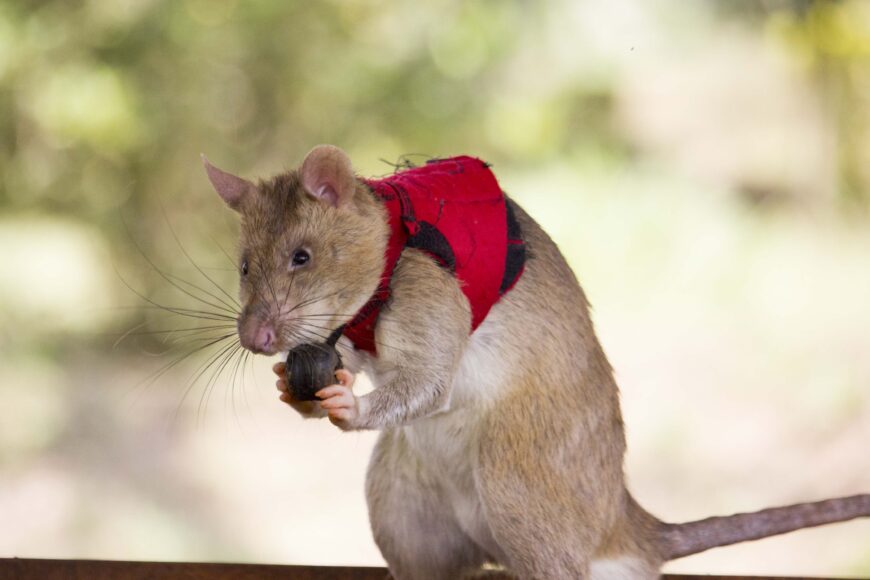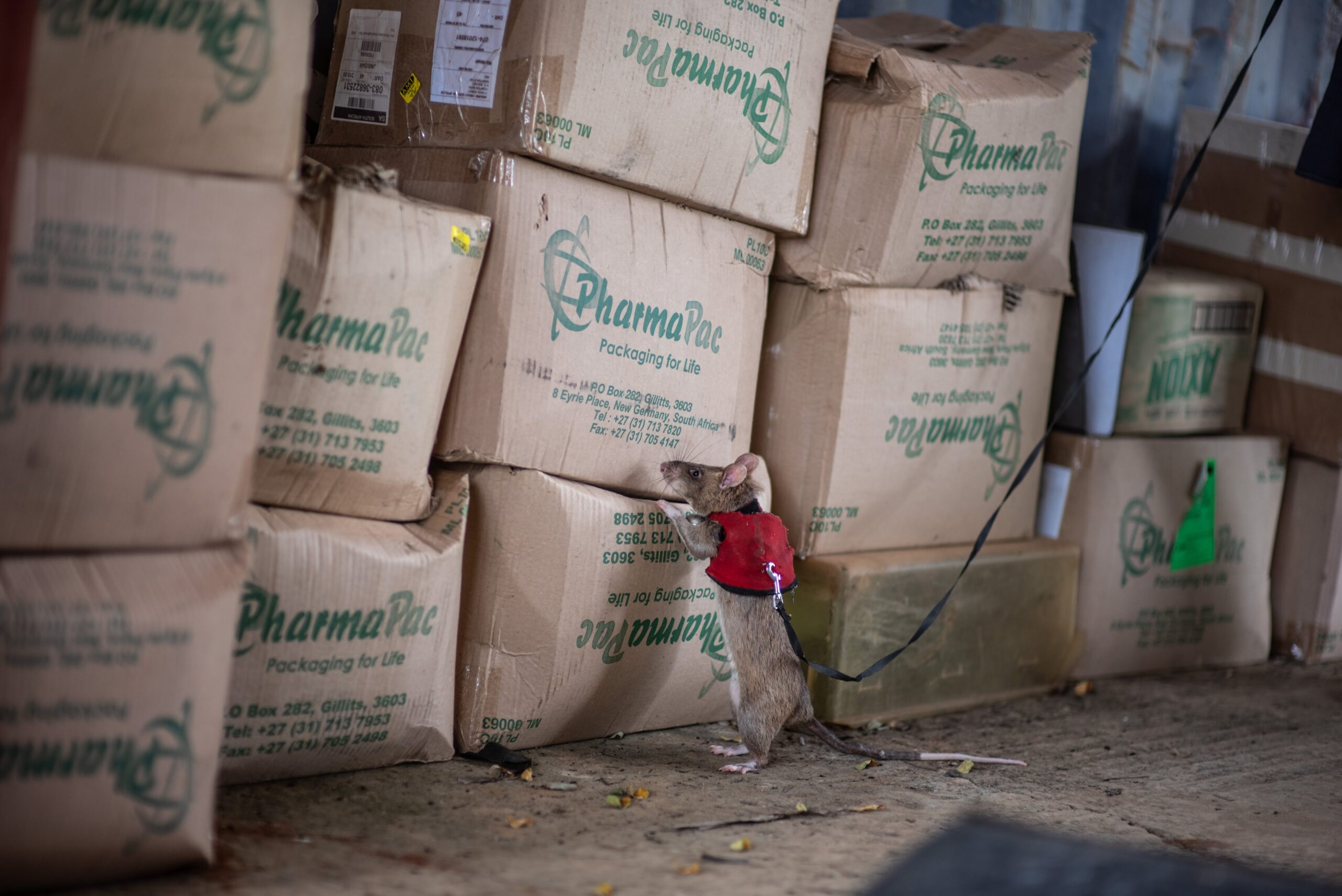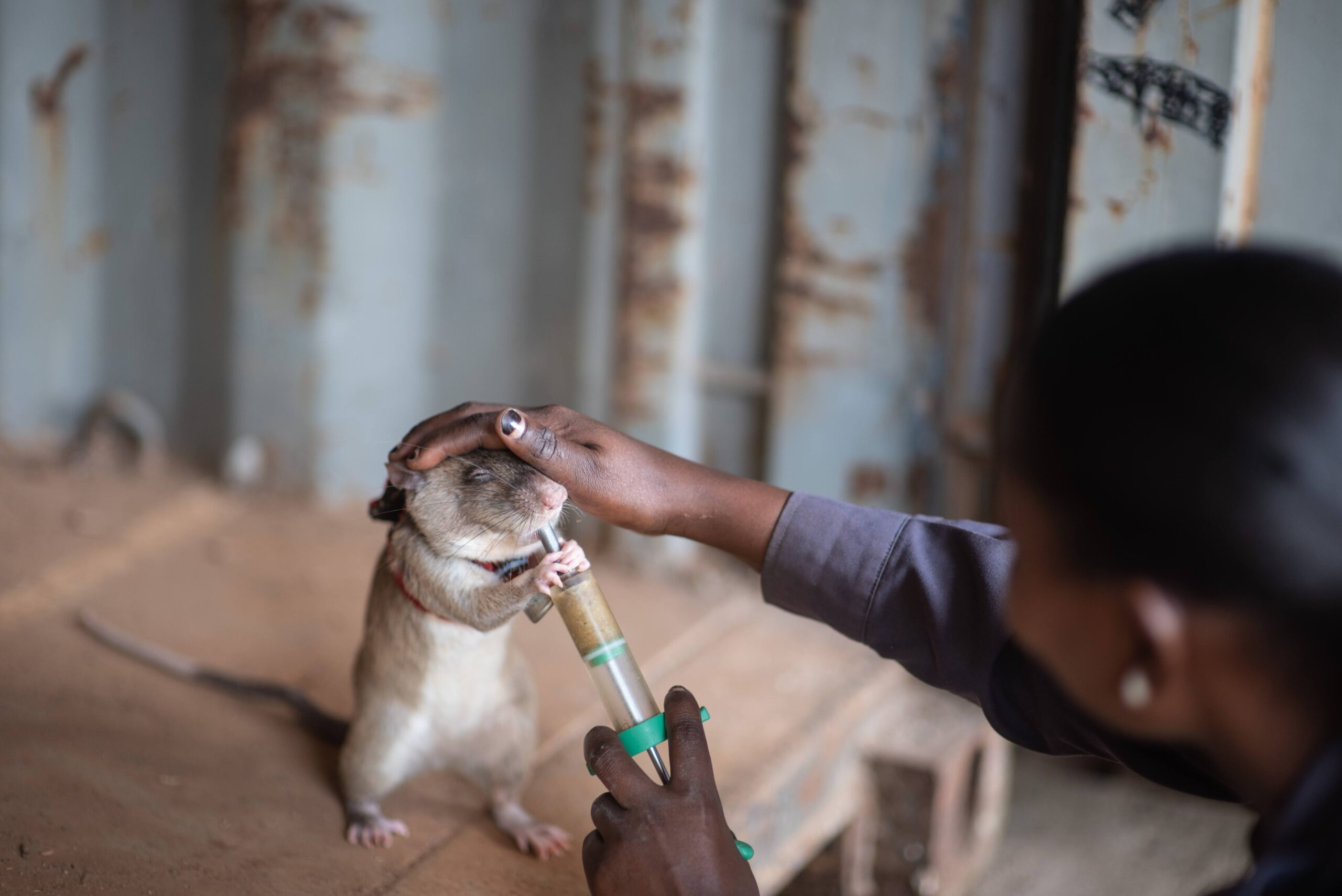Giant rat border agents could help put a stop to wildlife poaching
The rodents learned to sniff out elephant ivory and other goods from at-risk species

This giant African pouched rat is being trained to signal for illegally smuggled wildlife products. It pulls on a small ball on its collar to alert its handler.
APOPO
Share this:
- Share via email (Opens in new window) Email
- Click to share on Facebook (Opens in new window) Facebook
- Click to share on X (Opens in new window) X
- Click to share on Pinterest (Opens in new window) Pinterest
- Click to share on Reddit (Opens in new window) Reddit
- Share to Google Classroom (Opens in new window) Google Classroom
- Click to print (Opens in new window) Print
A new kind of border-patrol agent could soon sniff out smuggled goods in African ports. They’re rats that wear tiny red vests.
Like dogs, African giant pouched rats have a great sense of smell. Researchers thought the rodents might be able to detect illegal goods that are smuggled across country lines. So trainers taught them to identify items from at-risk species. The animals might be able to help protect those species by finding smuggled ones before they could be sold.
Many tourists visit regions like West Africa to see wildlife. But some species are disappearing. Poachers add to this problem by catching animals for the pet trade. Or they may illegally kill some for their parts. They might hack horns off living rhinos, for instance. Or they might leave dead elephants to rot on a forest floor. Products like rhino horns or elephant tusks are usually taken to other countries to be sold.
Poaching and smuggling are destroying biodiversity, says Isabelle Szott, a behavioral ecologist. “It’s very brutal.”

Szott used to work in Tanzania, Africa, with a group called APOPO. This group has trained African pouched rats (Cricetomys ansorgei) to put their noses to use before. For example, some of these rats learned to detect dangerous weapons. Some can even sniff out a lung disease called tuberculosis.
People at APOPO thought the rats also had potential at ports, where products enter and leave a country. Besides their incredible sense of smell, these rats are agile and cost little to care for.
Szott’s team taught 11 rat recruits how to tell the difference between odors. The laboratory was a giant box outfitted with 10 small chambers. The researchers placed different samples in each chamber. Some were from animals that get poached. Others were not. The researchers gave the rats food when they kept their nose above the target odor for three seconds. That pose signaled that the rat had found something.

The rats learned to signal when they found scales from a pangolin, a threatened small mammal. They also signaled when they sniffed rhino horn, elephant tusk and African blackwood (used in some musical instruments). Eventually, rats who completed these tests could tell the four scents apart from 146 other odors. Szott was part of a team that reported their results October 29 in Frontiers in Conservation Science.
Training the rats to detect scents in the lab is only the beginning, says Szott. Some went on to get lessons in fake warehouses and even in real ports.
When the APOPO rats get too old to be wildlife detectives, she says, they retire. They’ll “just live out their days,” pampered with fruits, veggies and sun-dried fish.







